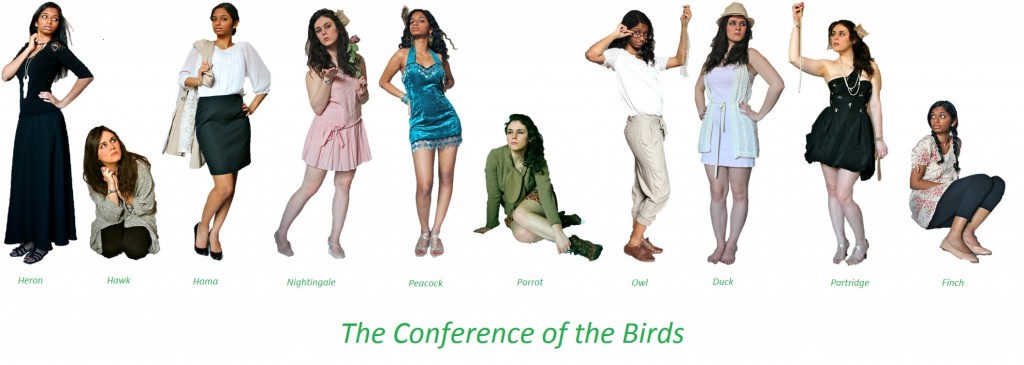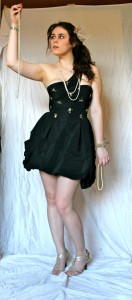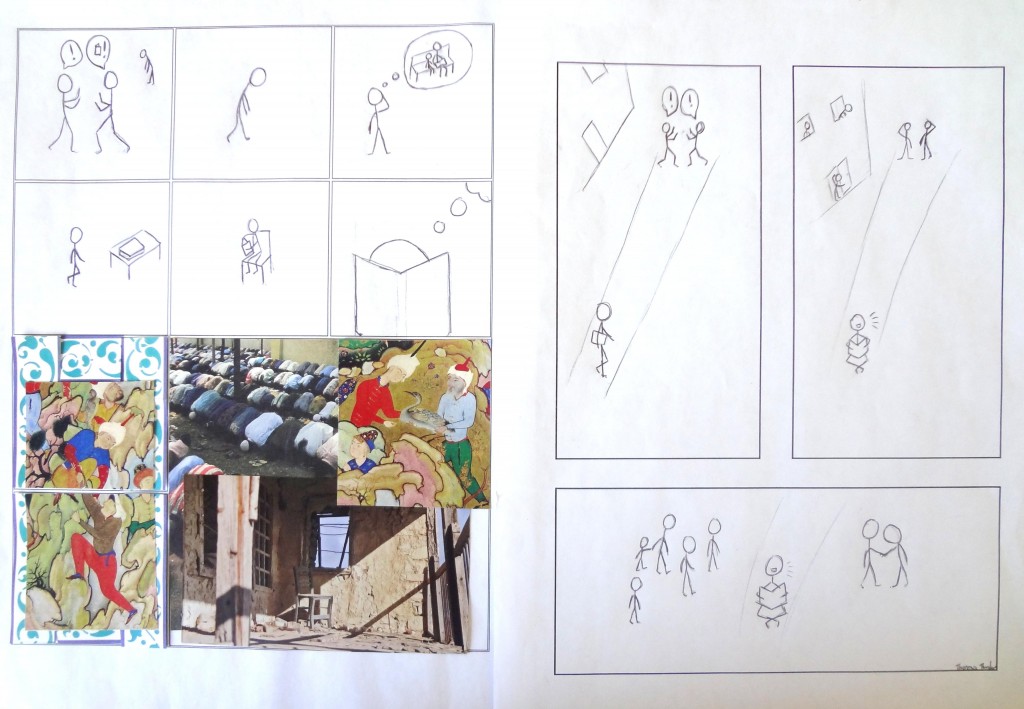C&B 12: An Experiential Learning Exhibit – Introductory Essay
This exhibit features six creative projects I have made in response to weekly readings for the course Culture and Belief 12: For the Love of God and His Prophet: Religion, Literature, and the Arts in Muslim Cultures. My goal for all of my projects was to convey a message to a viewer without requiring too many words. This class pushed me to think non-verbally in order to express myself, which was a breath of fresh air in light of the typical types of academic work I am usually asked to do. I found that many of the readings about Islam elicited particular emotions in me, making the course a truly experiential learning process. Therefore, the goal of this response work is to elicit emotions in the viewer, whether they are tenderness, passion, shock, anger, excitement, sadness, amusement, pity, or any other feeling that arises.
Bringing My Personality to the Creative Responses
One important theme of this course is that there is no singular culture of Islam – Muslims around the world come from a diversity of cultures and experiences, so when characterizing something as “Islamic” it is important to consider “whose Islam?” In my creative responses, I use art forms which represent my interpretation of Islam and my identity, rather than attempting to copy art forms of someone else’s Islam. Because of this, there is much one can learn about my personality by looking through my creative response projects.
For example, it may be clear to a viewer that I am a dancer because of my projects for Week 4 and Week 8. In Week 4, I use a flower collage to characterize the relationship between the Prophet Muhammad and the human soul as the relationship between a leader and a follower in a beautiful waltz. According to Ali Asani’s essay “In Praise of Muhammad: Sindhi and Urdu Poems”, the relationship between the human spirit and the prophet is often represented in Sindhi poetry by imagery typically associated with weddings, including “showers of flower petals” and “the fragrant wedding bed on which have been strewn pearls and roses” (162). Muhammad is often portrayed as a bridegroom who serves as a spiritual guide to the virahini, the bride who symbolizes the human soul. I immediately related the way the bridegroom guides the virahini on the path to truth to the way I must have faith in my dance partner, trusting that he will lead me to take the correct next step when performing. Furthermore, the wedding metaphor of Sindhi poetry reminded me of the Western tradition of a couple’s first dance at a wedding. I found that it was fitting to use dance as a representation of love and trust between humanity and Muhammad.
I also felt that dance was an appropriate way to express energy and inspiration that humans derive from prayer to Allah. In Week 8, I choreographed a qawwali dance with two classmates to a clip of the song “Allah Hoo” by Nusrat Fateh Ali Khan. We used South Asian dance techniques, which I had some experience with through my involvement with South Asian dancing on campus and from exposure I have had to Indian dancing through my Indian background. I enjoyed making this project because the rhythm of qawwali music is excellent for energetic dance steps. Initially when planning the project, I was unsure of whether we would be able to do the dance “correctly.” However, I realized that the purpose of qawwali is emotional expression – a qawwali singer expresses passionate love and devotion to God through his voice, and it is the energy of the music that makes the lyrics genuine rather than the use of particular steps. In The Shambhala Guide to Sufism, Carl W. Ernst quotes Nusrat Fateh Ali Khan’s explanation of his performances of qawwali music for western audiences: “The people of the West do not understand the language, but they understand the rhythm, and they enjoy it” (191). In light of this, we attempted to use the rhythm of the music to express the passion, energy, and joy felt by artists who use qawwali to praise Allah. I found this project rewarding because I was able to incorporate both an intellectual understanding of what qawwali means with a personal feeling of excitement that I have when dancing to rhythmic music.
It may also be evident to a viewer that I enjoy photography and fashion because of my project for Week 10, a photo shoot inspired by the Persian poem The Conference of the Birds by Farid ud-Din Attar. Each photo represents one bird’s excuse for why they do not need to go on a journey to find the Simorgh, their potential king. While doing the shoot, I was amazed by the way clothing can create such a strong impression of someone’s personality. Also incredible is how slight alterations in the way a model is positioned can completely change a viewer’s understanding of their character. The photo shoot was exciting because prior to the project, I had no experience with modeling in front of a photographer and I had never used a digital SLR camera before. However, it was more challenging than I expected. With responsibility as both photographers and models, my partner and I had to spend a long time adjusting our own and each other’s body positioning in order to clearly capture each bird’s key personality trait. We went through over a hundred photographs trying to select the few that told exactly the story we wanted to tell about the birds. This project was rewarding because it forced us to examine the characters in The Conference of the Birds from every angle – we had to simultaneously be them, empathizing with them as models, and critically examine them as photographers and editors to recognize their flaws in the way their leader, the hoopoe, does. The images from this project may produce a dual reaction in the viewer – at first one may sympathize with these characters or even find them attractive, but upon deeper reflection one can recognize their personality traits as weaknesses which prevent them from searching for the truth of Allah.
A viewer of my work may also realize that I am a supporter of women’s rights because of my project for Week 12, a poster featuring the main character of the graphic novel Persepolis, Marji Satrapi, as a feminist. Feminist Coming Out Day aims to put a face to feminism in order to demonstrate the diversity of supporters that exist for gender equality during Women’s Week at Harvard and other college campuses. This poster demonstrates how feminism in Persepolis is relevant to women today because it represents the diversity of feminist faces, rather than portraying feminism as a one dimensional picture of upper- and middle-class white females in the United States. In an interview, Marjane Satrapi described herself as humanist rather than a feminist because she doesn’t believe that women are any better than men, but that all people are equally human.[1] However, her belief that men and women are equal in this sense is indicative of her support of the values of feminism, and her portrayal of women in her graphic novel was empowering to me as a female reader. Marji, her mother, and her grandmother are all strong female characters who stand up for themselves and fight for their freedom in their own ways. I found this inspiring because it broke down a stereotype that Iranian women are helpless and need Western “liberated” women to free them from oppression. I realized that to a Westerner unfamiliar with Marji’s story, it might be surprising to see a young girl in hijab as a face for feminism, but I believe that is exactly the purpose of Feminist Coming Out Day and the movement of third wave feminism – there is no single female experience and thus there is no single face of feminism. Thus, I found that making a poster for Women’s Week was relevant to my life and the lives of many of the women around me.
Common Themes of the Course
One of the themes of Islam I found myself constantly gravitating towards was that of beauty and passionate love between humans and Allah and Muhammad. This theme is commonly present in Sufi art forms such as poetry and music, and I found myself very focused on creating artwork that was beautiful in order to capture these sentiments. I used flowers in my collage for Week 4 because roses are often used as a symbol of the Prophet Muhammad’s beauty and grace. This is important because Muhammad serves as an inspiration to all Muslims as an example of an ideal follower of Allah, so Muslims mimic his actions, which they learn about through hadith, in order to achieve this grace as best they can. In our qawwali dance for Week 8, we used beautiful poses and wrist movements to demonstrate the beauty of God’s love and the way it inspires dancing. However, expressions of love for God and Muhammad are not limited to the genre of Sufi art. In my graphic novel strip for Week 2, I tell the story of a boy who believes the Qur’an is a tool which fosters unity and friendship among Muslims. I created this comic in response to Ziauddin Sardar’s essay “Reading the Qur’an,” in which he describes association of the Qur’an with his warm and loving home as he recalls reading the Qur’an in his mother’s lap. Similarly, the boy in my story thinks about his happy experiences reading the Qur’an with his mother. He thinks about the way Muslims around the world join together to love and worship Allah by performing salat. His feelings of love and warmth also cause him to think about the way the Qur’an inspires charity, or zakat, which is represented by an image of one man helping up another man. This idea of charity touches on the principles of social justice and helping the less fortunate which are essential to Islam. Sardar expresses frustration in those who misuse the Qur’an to reject love and peace in favor of “justification for misogyny,” “validation for hatred of others,” “oppressive laws,” and “arguments for superiority of certain classes and individuals” (9). Similarly, the boy in my story is saddened by two fighting men who are using the Qur’an to justify their aggression. He uses recitation from the Qur’an to inspire camaraderie between the two men. The boy effectively brings several members of his town together as they listen to his beautiful recitation. This graphic novel strip is an example of the way the Qur’an can inspire beauty and love in those who read it, if they choose to interpret it in a positive light.
Despite the many of examples of love and beauty that Muslims can find in their religion, I recognize that the history of Islam is not entirely blissful. In fact, it includes many instances of pain and suffering. The ta’ziyeh is a drama which Shi’ites use to relive the death of Husain, who they believe to be the rightful successor of Muhammad due to their relationship by blood. There was one scene from “The Miracle Play of Hasan and Husain,” as translated by Lewis Pelly, which I felt was particularly striking: Husain’s son and nephew are killed in his arms and he lifts his blood-stained hands to heaven to utter a funeral prayer for them. This imagery was profound because it was simultaneously full of despair from tragedy and strength from Allah. I chose to respond to this scene of the ta’ziyeh in Week 5 with an Expressionist drawing in order to convey these different sentiments using color contrasts and pencil strokes. The experience of creating this drawing was an emotional one – rather than planning out details as I typically did with my other creative responses, I allowed feelings to guide me in making it, and in doing so experienced a sense of emotional catharsis. This type of response was important because the drama of the ta’ziyeh is meant to engage audience members emotionally so that they truly experience Husain’s suffering. Through this drawing, I was able to express the theme of suffering but also transcendence as part of the Shi’ite experience.
Another important theme I observed in the course readings was the weakness of human nature. It seemed that in order to obtain strength of character, one must work hard and often struggle to understand Allah, even though no human is ever able to achieve a full understanding of Him. Human weakness is clearly seen in The Conference of the Birds, in which each bird comes up with an excuse for why they do not want to go on a journey to find the Simorgh, their potential king. Each bird represents a single human fault, as portrayed in my photography project from Week 10, while the Simorgh is a symbol of the mystical truth of God. This story serves as a metaphor for the way human faults, such as greed, pride, false piety, and cowardice, get in the way of the search for Allah. Furthermore, when people interpret the holy word of God from the Qur’an to justify violence and hatred, as is shown in my comic strip from Week 2, it is evident that they are weak in character and shrouded in darkness. For those who can reject these faults, Muhammad serves as a guide and a leader to bring human darkness to light, as is seen in my collage from Week 4. Husain used prayer to obtain strength from Allah in the midst of tragedy, as seen in the drawing from Week 5. Human weakness is an important aspect of Islam because Muslims pray to Allah, read the Qur’an, and look to Muhammad as an example for human behavior in part to derive strength from God.
Synthesis
The body of work I have produced here is meant to communicate the emotions which I personally experienced while reading for this course. The graphic novel strip from Week 2 conveys feelings of warmth and unity that a child experiences when reading and reciting the Qur’an, as well as the feelings of outrage he experiences when others abuse the Qur’an by using it to justify violence and hatred. The flower collage from Week 4 illustrates the loving devotion and trust that Muslims feel towards the Prophet Muhammad. The Expressionist drawing from Week 5 is meant to provoke feelings of sadness and despair that Shi’ite Muslims experience when reliving the death of Husain, descendent of Muhammad; it also expresses the power and strength Husain possessed during this time of sacrifice, inspiring Shi’ites to garner this strength from Allah as well. The qawwali dance from Week 8 communicates the beauty Sufis find in prayer to Allah and the energy they derive from prayer through music, which can be used to bring them to a state of ecstasy. The fashion photography project from Week 10 depicts various human faults which the devout must overcome in order to find Allah’s truth; viewers of these photographs may empathize with these character flaws and simultaneously recognize them as obstacles to an understanding of Allah. The poster from Week 12 breaks down stereotypes about women and feminism in Iran and in Islam in general; it is meant to give a feeling of empowerment to feminists of all cultures and identities.
If I have done my job correctly, a viewer will encounter a broad range of emotions in this body of artwork, reflecting the great diversity of Islamic experiences. When asked “whose Islam?” these projects represent, I would say that these works are illustrative of my own interpretations of Islam as I experienced them through this course. Your job as viewer is now to allow yourself to view Islam through my eyes. I have purposefully created an exhibit that is not about reading as much as it is about feeling. When you view these pieces, I ask that you take a moment to really experience them. Before you think about each one, just look, feel, and react.
[1] Ghadishah, Arash. Interview with Marjane Satrapi. “Questions for Marjane Satrapi.” ABC News, 2006.
posted in Uncategorized | Comments Off on C&B 12: An Experiential Learning Exhibit – Introductory Essay









